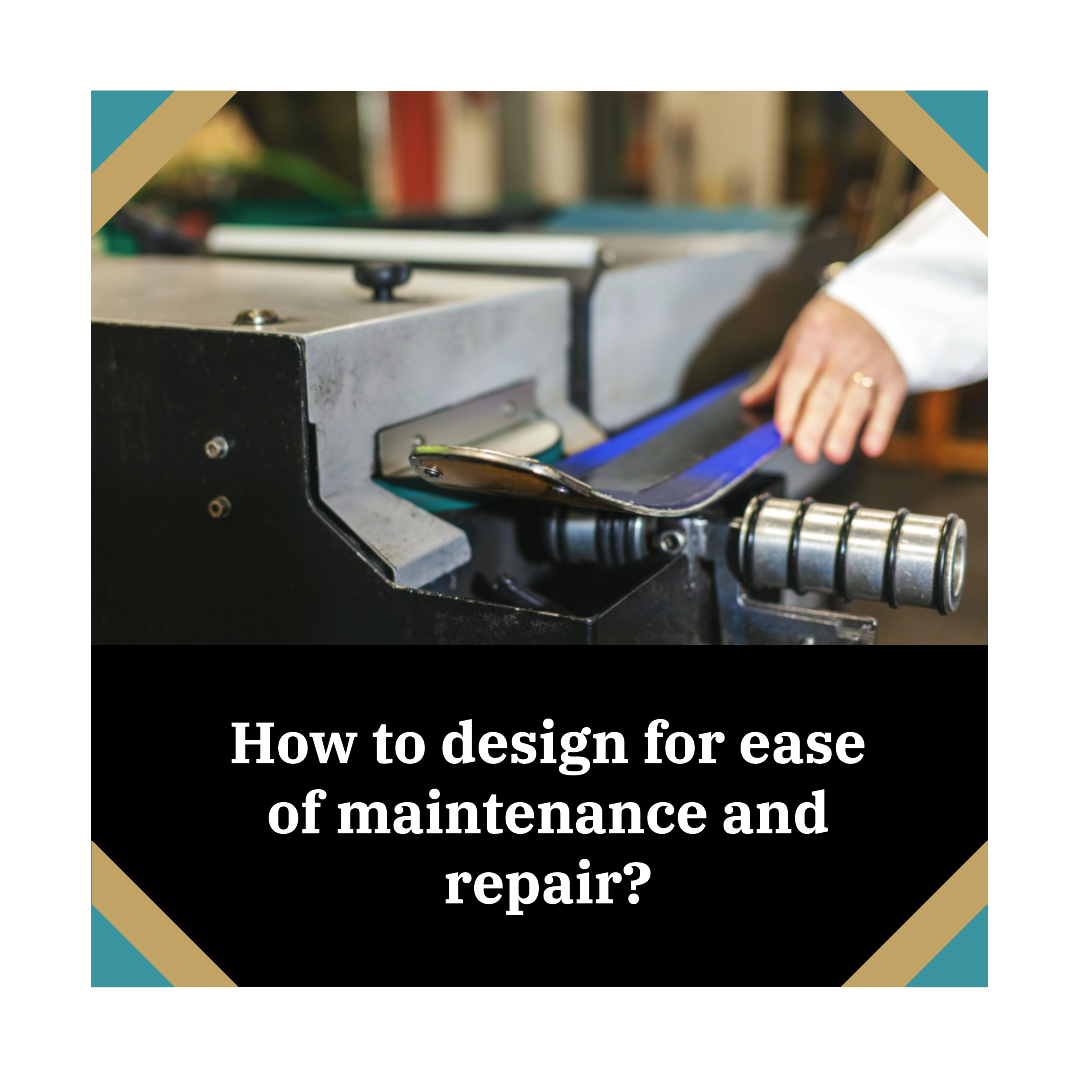How to design for ease of maintenance and repair?
Designing for ease of maintenance and repair is an important consideration in product design. It can help to reduce the costs and downtime associated with maintaining and repairing products. It can also improve the safety and reliability of products.
There are a number of ways to design for ease of maintenance and repair. Some of the most important factors to consider include:
- Modularity: Designing products in a modular way can make them easier to maintain and repair. Modules can be easily replaced or swapped out, which can reduce the time and cost of repairs.
- Accessibility: Parts that need to be serviced or repaired should be easy to access. This may involve using removable panels or designing the product so that it can be easily disassembled.
- Standardization: Standardizing parts and components can make it easier to find replacements and to reduce the need for specialized tools and skills.
- Documentation: Providing clear and concise documentation can help maintenance and repair personnel to understand how to service and repair the product.
Here are some tips for designing for ease of maintenance and repair:
- Involve maintenance and repair personnel in the design process: Involving maintenance and repair personnel in the design process can help to ensure that the product is designed to be easy to maintain and repair.
- Use design for manufacturability (DFM) and design for assembly (DFA) techniques: DFM and DFA techniques can help to reduce the number of parts and assemblies in a product, which can make the product easier to maintain and repair.
- Use standard parts and components: Using standard parts and components can make it easier to find replacements and to reduce the need for specialized tools and skills.
- Design for accessibility: Design the product so that parts that need to be serviced or repaired are easy to access. This may involve using removable panels or designing the product so that it can be easily disassembled.
- Provide clear and concise documentation: Provide clear and concise documentation on how to service and repair the product. The documentation should be written in a language that is easy to understand and should include diagrams and illustrations.
Here are some examples of how to design for ease of maintenance and repair:
- Modular design: A modular design allows modules to be easily replaced or swapped out, which can reduce the time and cost of repairs. For example, a modular laptop design allows the keyboard, screen, and other components to be easily replaced.
- Accessibility: Parts that need to be serviced or repaired should be easy to access. For example, a car’s engine compartment is designed so that the engine and other components are easy to access for maintenance and repair.
- Standardization: Standardizing parts and components can make it easier to find replacements and to reduce the need for specialized tools and skills. For example, many appliances use standard screws and bolts, which makes it easy to repair them.
- Documentation: Providing clear and concise documentation can help maintenance and repair personnel to understand how to service and repair the product. For example, the user manual for a car includes instructions on how to change the oil, replace the tires, and perform other maintenance tasks.
By following the tips above, you can design products that are easy to maintain and repair. This can help to reduce the costs and downtime associated with maintaining and repairing products. It can also improve the safety and reliability of products.
Additional tips for designing for ease of maintenance and repair
Here are some additional tips for designing for ease of maintenance and repair:
- Use diagnostic tools: Diagnostic tools can help to identify problems with a product before they cause a failure. This can help to reduce the cost of repairs and to prevent downtime.
- Design for preventive maintenance: Design the product so that it is easy to perform preventive maintenance tasks, such as cleaning and lubricating moving parts. This can help to extend the life of the product and to reduce the likelihood of failures.
- Provide training: Provide training to maintenance and repair personnel on how to service and repair the product. This can help to ensure that the product is maintained and repaired properly.
By following these tips, you can design products that are easy to maintain and repair. This can help to reduce the costs and downtime associated with maintaining and repairing products. It can also improve the safety and reliability of products.








